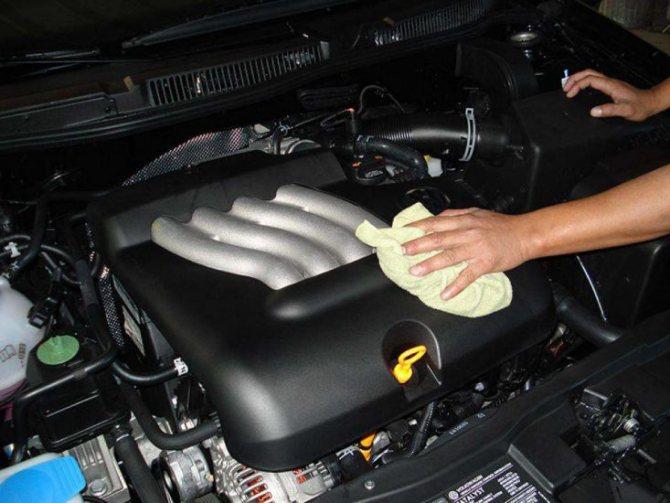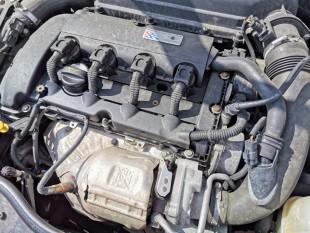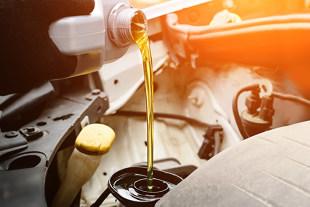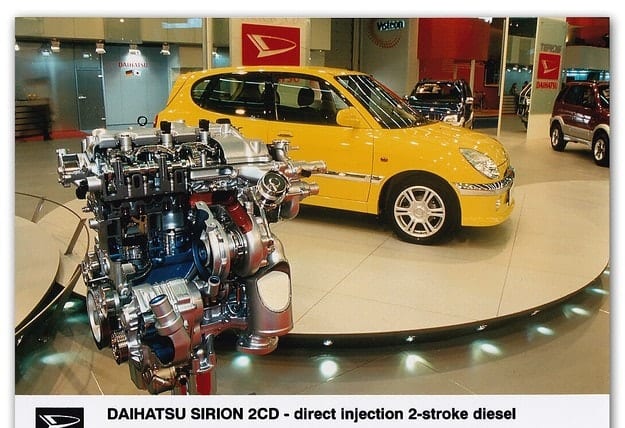
The engine in the car. Attention. This phenomenon can damage the power unit
 The LSPI phenomenon is a relatively new concept in the automotive industry. This is a derivative of knock combustion, which the automotive industry has finally dealt with with the technological development of internal combustion engines with spark ignition. Paradoxically, technological development, and in particular the reduction in size, has led to the fact that detonation combustion has returned to a very dangerous form of the LSPI (Low-Speed \uXNUMXb\uXNUMXbPre-Ignition) phenomenon, which, loosely translated, means pre-ignition at low temperatures. engine speed.
The LSPI phenomenon is a relatively new concept in the automotive industry. This is a derivative of knock combustion, which the automotive industry has finally dealt with with the technological development of internal combustion engines with spark ignition. Paradoxically, technological development, and in particular the reduction in size, has led to the fact that detonation combustion has returned to a very dangerous form of the LSPI (Low-Speed \uXNUMXb\uXNUMXbPre-Ignition) phenomenon, which, loosely translated, means pre-ignition at low temperatures. engine speed.
Recall what detonation combustion is in a spark ignition engine.
With the correct combustion process, just before the end of the compression stroke (ignition timing), the fuel-air mixture is ignited from the spark plug and the flame spreads throughout the combustion chamber at a constant speed of about 30-60 RS. Exhaust gas is produced which causes the pressure in the cylinder to rise to more than 60 kgf/cm2, causing the piston to move backwards.
LSPI. detonation combustion
 In knock combustion, a spark ignites the mixture near the spark plug, which simultaneously compresses the remaining mixture. An increase in pressure and an increase in temperature cause self-ignition and rapid combustion of the mixture at the opposite end of the chamber. This is a chain reaction of detonation, as a result of which the burning speed increases significantly, exceeding 1000 m / s. This causes a characteristic knock, sometimes a metallic ringing. The above process has a significant thermal and mechanical effect on pistons, valves, connecting rods and other elements. Ultimately, ignoring detonation combustion leads to the need to repair the main engine.
In knock combustion, a spark ignites the mixture near the spark plug, which simultaneously compresses the remaining mixture. An increase in pressure and an increase in temperature cause self-ignition and rapid combustion of the mixture at the opposite end of the chamber. This is a chain reaction of detonation, as a result of which the burning speed increases significantly, exceeding 1000 m / s. This causes a characteristic knock, sometimes a metallic ringing. The above process has a significant thermal and mechanical effect on pistons, valves, connecting rods and other elements. Ultimately, ignoring detonation combustion leads to the need to repair the main engine.
Already in the XNUMXs, engineers coped with this harmful phenomenon by installing a piezoelectric knock sensor. Thanks to him, the control computer is able to detect this dangerous phenomenon and adjust the ignition timing in real time, which in most cases eliminates this problem.
Today, however, the phenomenon of knocking combustion is returning in a very dangerous form of pre-ignition at low engine speeds.
Let's analyze how technological progress has caused the return of well-known and almost forgotten threats to the automotive industry.
LSPI. Reduction
 Along with the environmental requirements imposed by international institutions, car manufacturers began to reduce the power of spark ignition engines and widely use turbocharging. CO2 emissions and combustion have actually decreased, power and torque per horsepower have increased, and operating culture has remained satisfactory. Contrary to popular belief, as the example of Ford's first liter engines shows, the durability of small engines also leaves much to be desired. There seems to be a lot of flaws in the solution.
Along with the environmental requirements imposed by international institutions, car manufacturers began to reduce the power of spark ignition engines and widely use turbocharging. CO2 emissions and combustion have actually decreased, power and torque per horsepower have increased, and operating culture has remained satisfactory. Contrary to popular belief, as the example of Ford's first liter engines shows, the durability of small engines also leaves much to be desired. There seems to be a lot of flaws in the solution.
However, over time, in some instances of engines from different manufacturers, strange, serious piston defects began to appear - damaged rings, broken shelves, or even cracks in the entire piston. The problem, due to its irregularity, has proven difficult to diagnose. The only symptom that the driver can observe is an unpleasant, uneven, loud knock from under the hood that occurs only at idle. Auto manufacturers are still analyzing the problem, but we already know that there are several factors behind the LSPI phenomenon.
See also: Honda Jazz. Now and like a crossover
As with classic knock combustion, fuel with an octane rating lower than recommended by the manufacturer may be one of the causes. The second factor contributing to pre-ignition is the accumulation of soot in the combustion chamber. The high pressure and temperature in the cylinder cause carbon deposits to ignite spontaneously. Another, perhaps the most important factor is the phenomenon of washing off the oil film from the cylinder walls. As a result of direct fuel injection, the gasoline mist formed in the cylinder causes an oil film to condense on the piston crown. During the compression stroke, the high pressure and temperature can cause uncontrolled self-ignition even before the ignition spark is even generated. The process, violent in itself, is further exacerbated by proper ignition (a spark at the top of the cylinder), which increases the pressure and violence of the whole phenomenon.
After understanding the nature of the process, the question arises, is it possible to effectively counteract LSPI in modern, small-displacement, relatively powerful engines?
LSPI. How to resist?
 First, follow the manufacturer's recommendations for the minimum octane number of gasoline you use. If the manufacturer recommends 98 octane fuel, it should be used. The apparent savings will quickly pay off with the need for an overhaul immediately after the first few series of pre-ignitions. Fill up with petrol only at certain stations. The use of gasoline of unknown origin increases the risk that the fuel will not maintain the intended octane rating.
First, follow the manufacturer's recommendations for the minimum octane number of gasoline you use. If the manufacturer recommends 98 octane fuel, it should be used. The apparent savings will quickly pay off with the need for an overhaul immediately after the first few series of pre-ignitions. Fill up with petrol only at certain stations. The use of gasoline of unknown origin increases the risk that the fuel will not maintain the intended octane rating.
 Another thing is regular oil changes, with an interval of no more than 10-15 thousand. kilometers. Moreover, oil producers have already adapted their products in an attempt to counteract the LSPI phenomenon. There are oils on the market that promise to counteract the pre-ignition phenomenon according to specifications. As a result of laboratory tests, it was found that the removal of calcium particles from the oil contributes to this. Replacing it with other chemicals has actually reduced the risk of this problem. Therefore, if you have a low horsepower engine, an anti-LSPI oil should be used while maintaining the SAE and API specification specified by the vehicle manufacturer.
Another thing is regular oil changes, with an interval of no more than 10-15 thousand. kilometers. Moreover, oil producers have already adapted their products in an attempt to counteract the LSPI phenomenon. There are oils on the market that promise to counteract the pre-ignition phenomenon according to specifications. As a result of laboratory tests, it was found that the removal of calcium particles from the oil contributes to this. Replacing it with other chemicals has actually reduced the risk of this problem. Therefore, if you have a low horsepower engine, an anti-LSPI oil should be used while maintaining the SAE and API specification specified by the vehicle manufacturer.
Like almost all articles in the “car tips” series, I will end with a statement - prevention is better than cure. Therefore, having a powerful small engine, pay special attention, dear Reader, to fuel, oil and its replacement interval.
See also: Testing Skoda Kamiq - the smallest Skoda SUV
